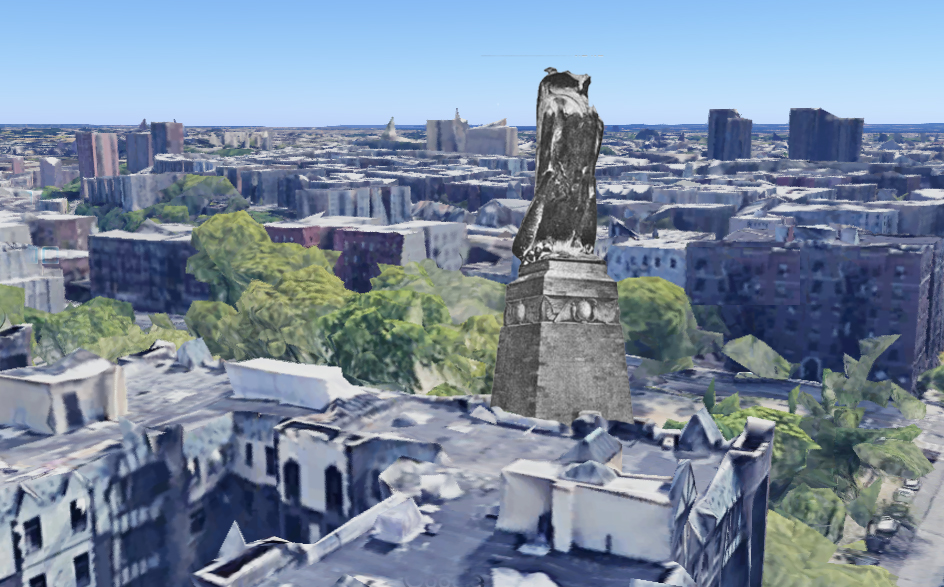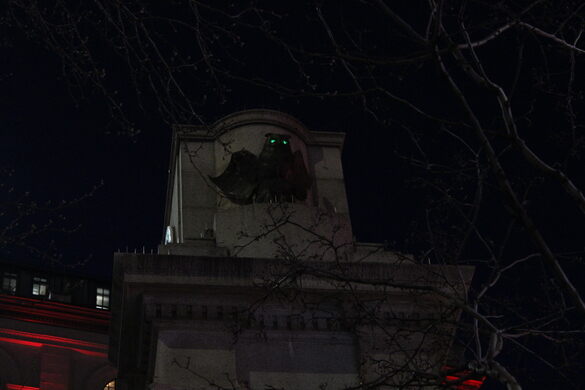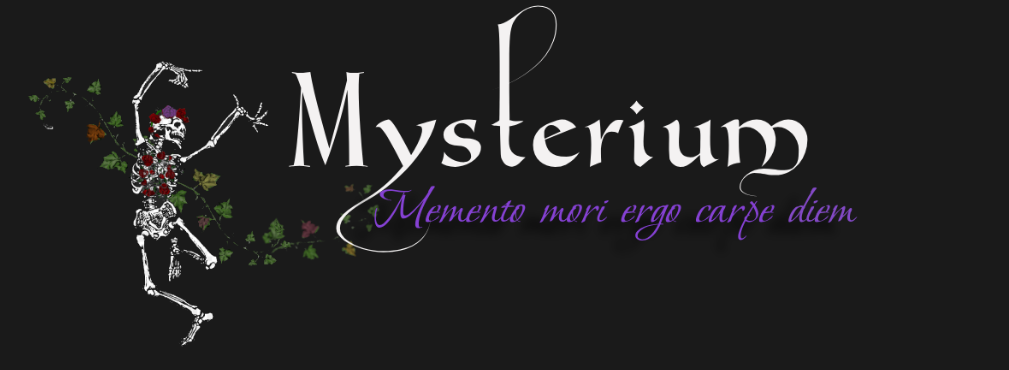
Click here to read the Atlas Obscura’s excellent account as to why the New York City skyline is currently lacking an enormous owl-shaped mausoleum.
The early 20th century French architect Maurice Guillemot described Andrew O’Connor’s monumental design in these terms:
This gigantic bird of night looms up from its pedestal, a startling apparition, enigmatic and disquieting. It will have an interior stairway, and the eyes are to be illumined with electric lights, the tomb being thus converted into a lighthouse. Into this mysterious apparition of the night the artist has put tragic power, just as into his caryatides he has put a certain charming grace.
To erect a statue in the open air on a monumental base, on the upper cornice of a building, or on a rocky height, is a difficult artistic feat. In the first place, the general aspect must be satisfying, agreeable and comprehensible. It is necessary, further, that the details shall be visible, and that this effect shall be gained without detriment to the ensemble; finally it is essential that the idea which has inspired the artist and which contributes the raison d’être of the work, be understood.”
Alas, Mr. Bennett’s fortunes had changed by the time he died and his monument never came to be. Certain aesthetic elements did, however, carry over into the Minerva statue currently gracing Herald Square, and I was delighted to stumble across the statue with its glowing-eyed owl sentries during my first visit to NYC in 2015. Memento mori …

